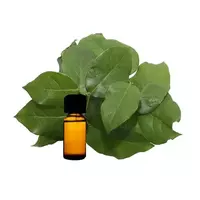Petitgrain oil

Citrus trees give us not only appetising juicy fruits, which are rich in taste and pleasant aroma, but also are the starting materials for obtaining valuable essential oils. For example, on the basis of fruits, or rather, citrus zest, it is customary to receive essential oils of orange, lemon, grapefruit, mandarin and some others. Citrus flowers act as a necessary raw material for the production of expensive neroli oil.
As for petitgrain oil, which is also widely in demand in the modern world, it is produced by steam distillation of small sprigs (young shoots) and pomeranian leaves, which is also often called bigardia (Seville, bitter or sour orange).
It is worth noting that some varieties of natural petitgrain oil, however, are obtained in very small quantities from shoots, leaves, as well as unripe small lemon fruits, sweet orange, bergamot and tangerine trees. At the same time, in order to obtain only two to two and a half kilograms of natural essential oil, petitgrain must be processed about one ton of raw plant raw materials.
The chemical composition of petitgrain oil is due to the presence of such components as ocymene, limonene, camphene, nerol, terpineol, geranylacetate, linalyl acetate, farnesol, furfurol, citranellol, some other biologically active substances and compounds.
Basically, petitgrain oil is used as a component of perfume compositions and fragrance in the production of cosmetic products and soap. In addition, this natural concentrate is often used in the food industry, where the aromatic properties of petitgrain oil are relevant in the manufacture of sweets, non-alcoholic and alcoholic beverages.
In home cooking, petitgrain oil can be used in minimal quantities as part of dressings for light salads, snack dishes, pastries and a number of desserts. In addition, a wide variety of drinks with the addition of literally a couple of drops of this essential oil significantly improve their taste and aroma properties.
Externally, petitgrain oil looks like a light yellow or colorless mobile liquid, which is distinguished by a rather strong bittersweet citrus-floral aroma that resembles the smell of linalyl acetate and linalool. The woody hues in this oil are intertwined with a refreshing scent.
Antiseptic, mycoseptic, bactericidal, decongestant, anti-inflammatory, analgesic, antispasmodic, tonic, deodorizing, antidepressant and sedative properties of petitgrain oil cause its use for therapeutic and preventive purposes.
Being the strongest antisclerotic agent, this essential oil also has a powerful antioxidant and regenerative effect. With its help, you can normalize the biochemical indicators of lymph and blood, as well as effectively cleanse the body by natural elimination of slags.
With a slight immunomodulatory effect, natural petitgrain oil promotes the stimulation of immunological reactivity and non-specific resistance (resistance) of the body. In addition, the distinctive property of petitgrain oil is considered its ability to stimulate faster recovery from operations, severe diseases and injuries.
oil petitgrain 899 kCal
Energy value of petitgrain oil (Ratio of proteins, fats, carbohydrates - ju):
Proteins: 0 g (~ 0 kCal)
Fats: 99.9 g (~ 899 kCal)
Carbohydrates: 0 g (~ 0 kCal)
Energy ratio (b | y): 0% | 100% | 0%
 Español
Español Français
Français Português
Português Русский
Русский 简体中文
简体中文 繁體中文
繁體中文 日本語
日本語 한국어
한국어 العربية
العربية Türkçe
Türkçe Қазақ
Қазақ Deutsch
Deutsch Italiano
Italiano Українська
Українська
